This year’s James Cropper Wainwright Prize for Nature Writing longlist is rich and abundant with unique tales of our natural world. Interweaving stories of the sublime natural landscape around us with personal narratives, this year’s talented longlisted authors seek refuge and knowledge in nature both on their doorstep and afar, connecting with the ebbs and flows of nature that continue amid tragedy and love. The ancient land, ritual and myth is elsewhere explored, as authors navigate the complexities and meaning of place, time and home. Strong voices and lyrical prose abound, will all our authors ultimately exploring how nature defines us as humans, and the urgent need to protect it at all costs.
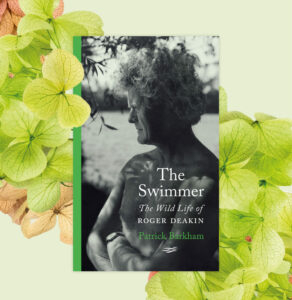
The Swimmer: The Wild Life of Roger Deakin, Patrick Barkham
The definitive biography of Roger Deakin, beloved author of cult classic Waterlog. Delving deep into Roger Deakin’s library of words, Patrick Barkham draws from notebooks, diaries, letters, recordings, published work and early drafts, to conjure his voice back to glorious life in The Swimmer.
![]()
![]()
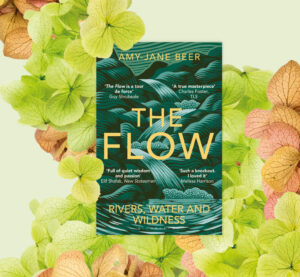
The Flow: Rivers, Water and Wildness, Amy-Jane Beer
A visit to the rapid where she lost a cherished friend unexpectedly reignites Amy-Jane Beer’s love of rivers, setting her on a journey of discovery. Threading together places and voices from across Britain, The Flow is a profound, immersive exploration of our personal and ecological place in nature.
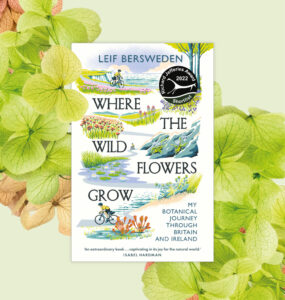 Where the Wildflowers Grow, Leif Bersweden
Where the Wildflowers Grow, Leif Bersweden
Leif Bersweden has always been fascinated by wild plants, but it is a landscape that is fast disappearing. Climate change, habitat destruction and declining pollinator populations mean that the future for plant life looks bleaker than ever before. Many of us are also unable to identify, or even notice, the plants that grow around us.
Now a botanist, Leif goes on a journey around the UK and Ireland, highlighting the unique plants that grow there, their history and the threats that face them, proving that nature can be found in the most unexpected places. An intriguing and timely exploration of the importance of Britain and Ireland’s plant life.
Twelve Words for Moss, Elizabeth-Jane Burnett 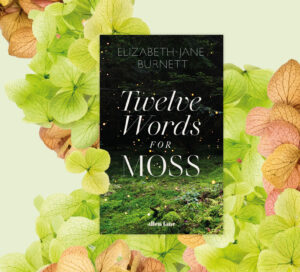
Glowflake, Rocket, Small Skies, Kind Spears, Marilyn . . .
Moss is known as the living carpet, but if you look really closely, it contains an irrepressible light. In Twelve Words for Moss, Elizabeth-Jane Burnett celebrates the unsung hero of the plant world with her unique blend of poetry, nature writing and memoir. Making her way through wetlands from Somerset to Country Tyrone, Burnett discovers the hidden vibrancy of these overlooked spaces, renaming her favourite species of moss as she recovers from her grief at her father’s death and draws inspiration from the resilience and tenacity of her plant – and human – friends.
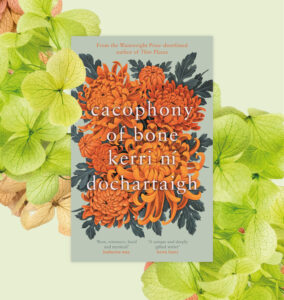 Cacophony of Bone, Kerri ní Dochartaigh
Cacophony of Bone, Kerri ní Dochartaigh
Two days after the Winter Solstice in 2019, Kerri and her partner moved to a small, remote railway cottage in the heart of Ireland. The pandemic arrived and their isolated home became a place of enforced isolation. It was to be a year unlike any we had seen before. But the seasons still turned, the swallows came at their allotted time, the rhythms of the natural world went on unchecked. For Kerri there was to be one more change, a longed-for but unhoped for change.
Cacophony of Bone maps the circle of a year – a journey from one place to another, field notes of a life – from one winter to the next. Fragmentary in subject and form, fluid of language, this is an ode to a year, a place, and a love, that changed a life.
Sea Bean, Sally Huband 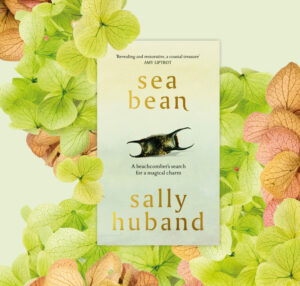
Sea Bean is a lyrical and evocative story of communion with nature on the stormy beaches of Shetland. When pregnancy triggers a chronic illness, Sally Huband begins beachcombing – a path that opens a world of ancient myths, fragile ecology, and deep human history; a path that brings her to herself again.
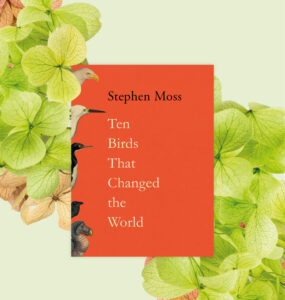 Ten Birds That Changed The World, Stephen Moss
Ten Birds That Changed The World, Stephen Moss
For the whole of human history, we have shared our world with birds.
We have hunted and domesticated them for food, fuel and feathers; placed them at the heart of our rituals, religions, myths and legends; poisoned, persecuted and often demonised them; and celebrated them in our music, art and poetry.
This is the story of that long and eventful relationship, told through ten birds whose lives – and interactions with our own – have changed the course of human history.
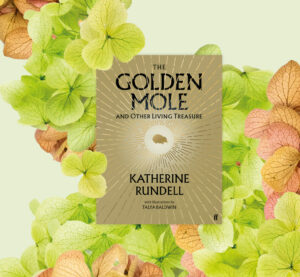
The Golden Mole: And Other Living Treasure, Katherine Rundell, illustrated by Talya Baldwin
A lavishly illustrated compendium of the staggering lives of some of the world’s most endangered animals, The Golden Mole is a chance to be awestruck and lovestruck – to fall for the likes of the wondrous Pygmy Hippo, the seahorse, the narwhal and, as astonishing and endangered as them all, the human.
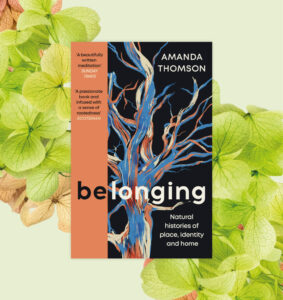 Belonging, Amanda Thomson
Belonging, Amanda Thomson
Reflecting on family, identity and nature, belonging is a personal memoir about what it is to have and make a home. It is a love letter to nature, especially the northern landscapes of Scotland and the Scots pinewoods of Abernethy.
Beautifully written and featuring Amanda Thomson’s artwork and photography throughout, it creatively explores how place, language and family shape us and make us who we are. It is a book about how we are held in thrall to elements of our past, it speaks to the importance of attention and reflection, and will encourage us all to look and observe and ask questions of ourselves.
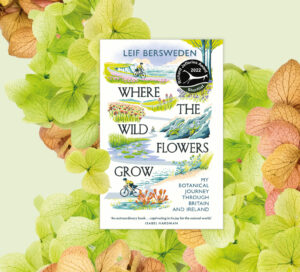
Why Women Grow: Stories of Soil, Sisterhood and Survival, Alice Vincent
Women have always gardened, but our stories have been buried with our work. Alice Vincent is on a quest to change that. To understand what encourages women to go out, work the soil, plant seeds and nurture them, even when so many other responsibilities sit upon their shoulders. To recover the histories that have been lost among the soil.
Why Women Grow is a much-needed exploration of why women turn to the earth, as gardeners, growers and custodians. Alice fosters connections with gardeners that unfurl into a tender exploration of women’s lives, their gardens and what the ground has offered them, with conversations spanning creation and loss, celebration and grief, power, protest, identity and renaissance.
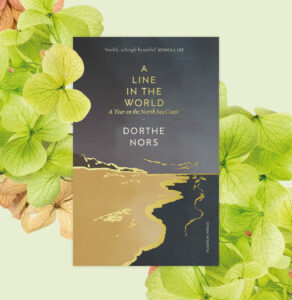
![]()
![]() A Line in the World: A Year on the North Sea Coast, Dorthe Nors, translated by Caroline Waight
A Line in the World: A Year on the North Sea Coast, Dorthe Nors, translated by Caroline Waight
This is the story of the windswept coastline that stretches from the northernmost tip of Denmark to the Netherlands, a world of shipwrecks and storm surges, of cold-water surfers and resolute sailors’ wives. In spellbinding prose, award-winning writer Dorthe Nors invites the reader to travel through the landscape where her family lived for generations and which she now calls home. It is an extraordinarily powerful and beautiful journey through history and memory – the landscape’s as well as her own.
Landlines, Raynor Winn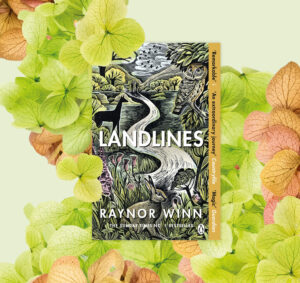
Written in her trademark luminous prose, Landlines is the inspirational story of Raynor and her husband Moth who, faced with the latter’s ailing health, embark upon a healing journey from North-west Scotland back to the familiar shores of the South-west Coast Path. On their incredible thousand-mile walk, Raynor and Moth map the landscape of an island nation facing an uncertain path ahead.
Privacy Policy | Terms & Conditions | Website by Milk & Tweed
| Cookie | Duration | Description |
|---|---|---|
| cookielawinfo-checkbox-analytics | 11 months | This cookie is set by GDPR Cookie Consent plugin. The cookie is used to store the user consent for the cookies in the category "Analytics". |
| cookielawinfo-checkbox-functional | 11 months | The cookie is set by GDPR cookie consent to record the user consent for the cookies in the category "Functional". |
| cookielawinfo-checkbox-necessary | 11 months | This cookie is set by GDPR Cookie Consent plugin. The cookies is used to store the user consent for the cookies in the category "Necessary". |
| cookielawinfo-checkbox-others | 11 months | This cookie is set by GDPR Cookie Consent plugin. The cookie is used to store the user consent for the cookies in the category "Other. |
| cookielawinfo-checkbox-performance | 11 months | This cookie is set by GDPR Cookie Consent plugin. The cookie is used to store the user consent for the cookies in the category "Performance". |
| viewed_cookie_policy | 11 months | The cookie is set by the GDPR Cookie Consent plugin and is used to store whether or not user has consented to the use of cookies. It does not store any personal data. |